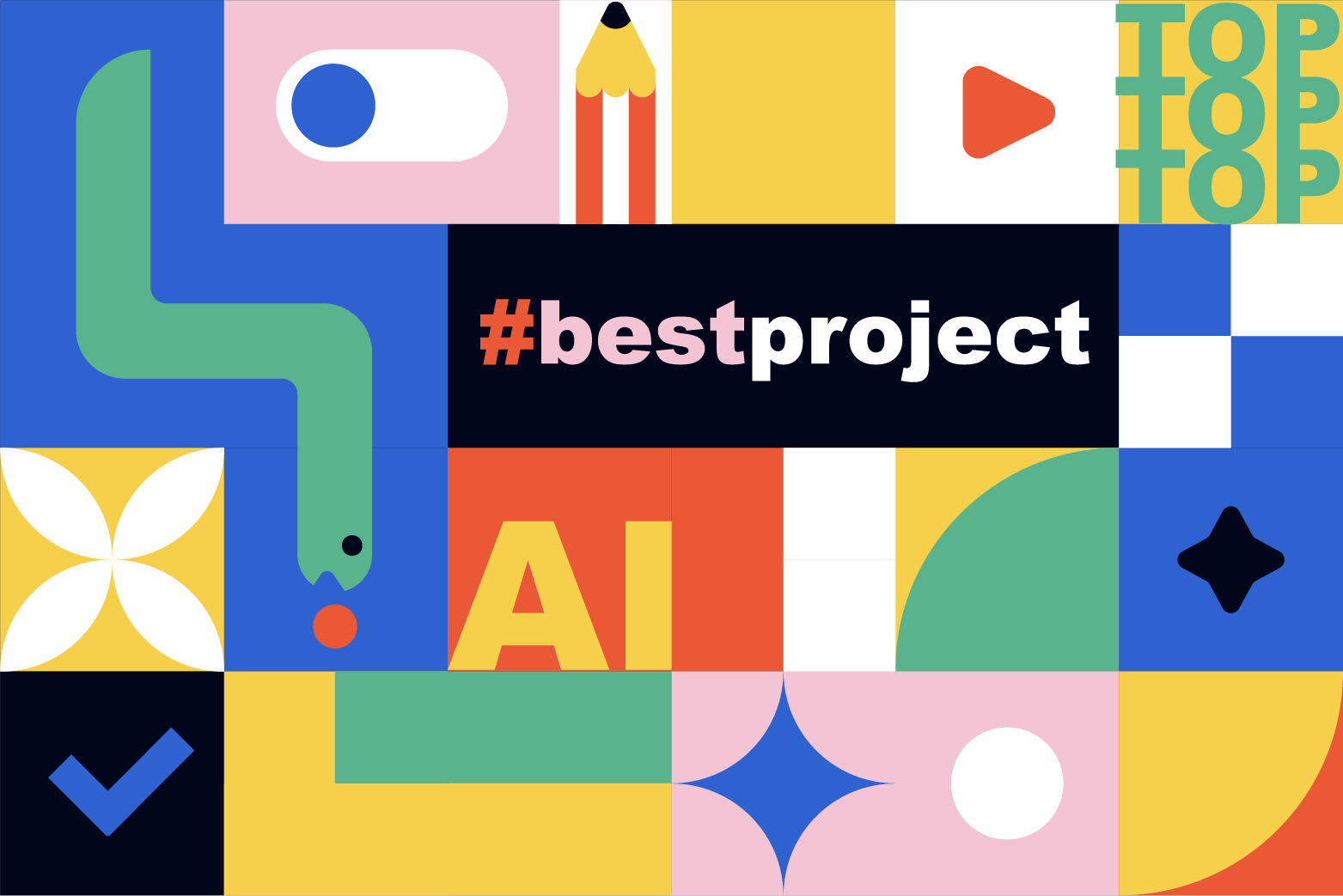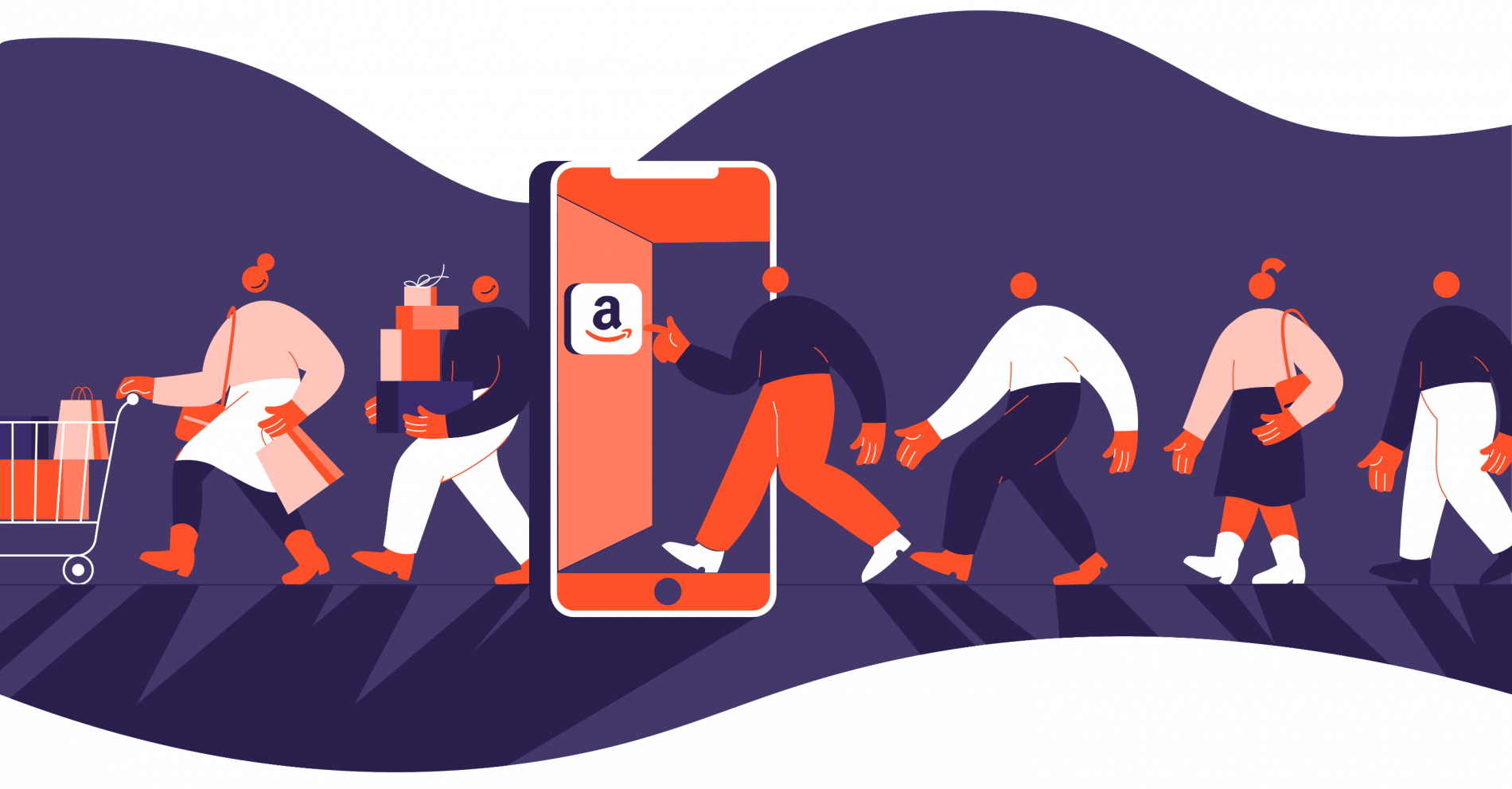In 2024, design remains a critical component of success and customer satisfaction, going beyond simple aesthetics. It is a strategic pillar for innovation and flexibility of solutions. The modern design team thinks not only about how the product looks but also how it feels when using it. Therefore, they closely cooperate with engineers and developers.
As companies strive to stand out in a crowded marketplace, understanding and implementing effective design principles is essential. Design thinking and a user-centered approach are at the heart of transformation.
In our new article, we will talk about the components of effective design in 2024, how they affect business, and why you should pay attention to these points. In addition, we will look at the nuances of design thinking in business and its impact on your success.
What is Design Thinking in Business?
Design thinking is a problem-solving approach that focuses on understanding the user, challenging assumptions, and rethinking problems in an attempt to identify alternative strategies and solutions. This is particularly useful for solving complex problems that are ill-defined or unknown. It’s also about a hands-on, user-first approach to innovation.
In a business context, design thinking harmoniously combines the needs of people, the capabilities of technology, and the requirements for business success. This method includes several stages:
- empathizing;
- definition;
- idea;
- prototype;
- testing.
By putting the user at the center of the process, your team can create more efficient and innovative products, services, and processes.
Empathizing with users involves immersing yourself in their environment and experiences to deeply understand their needs. Problem definition turns these ideas into a clear statement of the problem.
The idea encourages the generation of a wide range of ideas and potential solutions. Prototyping, in turn, involves the creation of reduced versions of a product or certain functions present in a product. And at the end of testing is the stage where user feedback is collected to improve and improve the solution.
Design thinking and UI/UX services also emphasize iterative progress, meaning solutions are constantly refined and improved based on user feedback. This iterative nature ensures that the final product or service is closely aligned with user needs and expectations, thereby increasing the likelihood of market success and customer satisfaction.
Why is it important?
Adopting design thinking can provide several benefits for a business. It fosters a culture of innovation by encouraging creativity and collaboration between teams.
Experts claim that organizations that use design thinking can reduce time to market by up to 75%. In addition, it helps reduce the risks and costs associated with product development by early validation of ideas through prototyping and user testing.
In addition, design thinking can increase customer satisfaction and loyalty by creating solutions that truly solve users’ problems and improve their experience. Companies that take this approach are better positioned to create products and services that resonate with their target audience, ultimately driving growth and competitive advantage.
In other words, it’s a powerful framework that helps companies innovate and solve complex problems by focusing on and understanding the user. This approach helps you increase your creativity, improve your product development processes, and deliver solutions that truly meet your customers’ needs.
Essential Points in Business Design 2024
In 2024, several key design trends are shaping business success:
- First impressions: High-quality, visually appealing design is critical to making a positive first impression.
- User-centered design. Prioritizing user experience (UX) leads to higher conversion rates and customer loyalty. Regular testing and iterating based on user feedback is vital to creating an intuitive and satisfying experience.
- Optimization for mobile devices. Since a significant portion of web traffic comes from mobile devices, mobile optimization is essential. This includes responsive design, fast loading, and easy navigation.
- Dark Mode: The dark mode option caters to the user’s preference for easy-on-the-eyes and battery-saving interfaces. This trend requires thoughtful implementation to ensure readability and accessibility.
- Sustainable development and ethical design: Environmental and ethical design practices are becoming increasingly important to consumers. Businesses that use green practices can enhance their brand image and attract environmentally conscious customers.
- Inclusiveness: Designing for accessibility ensures that products and services can be used by people with different abilities. Inclusive design principles help businesses reach a wider audience and demonstrate social responsibility.
- AI and Machine Learning: AI and machine learning are transforming design by enabling personalized user interactions and providing insights into user behavior. These technologies can improve efficiency, anticipate user needs, and continuously improve projects.
- Data-driven design decisions: Using data analytics to improve design ensures that changes are supported by robust evidence, leading to improved user experience and alignment with business goals.
- Minimalism and simplicity: Minimalist design, characterized by simplicity and clean lines, continues to dominate. This approach improves functionality and user interaction, resulting in higher conversion rates and engagement.
- Branding: Consistent, strong branding through design elements such as logos, color schemes, and typography helps businesses gain recognition and trust. Effective branding involves telling stories and connecting with your audience on a deeper level.
Now, let’s take a closer look at every point.

The Power of First Impressions
A compelling design can make or break the first impression. According to Adobe research, 38% of people will stop engaging with a website if the content or layout is unattractive. So you can see the importance of investing in high-quality, visually appealing design right from the start.
Beyond simple aesthetics, user experience design services contribute to functionality and ease of navigation to create great and unforgettable first impressions. A well-designed website or mobile app can emphasize your professionalism, expertise, and reliability – qualities necessary to convert visitors into customers. For companies, this means not only focusing on the visual aspects but also ensuring that the design is consistent with the brand’s message and goals.
User-Centered Design is King
User experience was essential in previous years and remains a top priority today. Businesses must focus on creating designs that are not only visually appealing but also user-friendly. For instance, Forrester research highlights that well-designed user interfaces could raise your conversion rate by up to 200%, while better UX design based on proper user testing could yield conversion rates up to 400%.
Incorporating user feedback into the design process is critical. Regularly testing and iterating on design elements based on real user interactions can help identify pain points and areas for improvement. Adopting a user-centered approach helps businesses create more intuitive and satisfying experiences, leading to higher customer retention and loyalty.
Mobile Optimization is Essential
With more than half of all web traffic coming from mobile devices, mobile-first design is no longer optional. Google’s algorithm updates prioritize mobile-friendly websites, which means businesses must ensure their websites are optimized for mobile use. This includes responsive design, fast loading times, and easy navigation.
Furthermore, mobile optimization extends beyond websites to include mobile applications and other digital platforms. As mobile commerce continues to grow, businesses that provide seamless mobile experiences are more likely to see higher engagement and sales. Keeping up with mobile design trends and technologies is crucial to staying relevant in a mobile-centric world.
The Rise of Dark Mode
Dark mode has surged in popularity, with users appreciating its eye-friendly, battery-saving benefits. According to a survey by Android Authority, almost 92% of people use dark mode wherever possible. Integrating a dark mode option can enhance user experience and cater to this growing preference.
Implementing dark mode is not just about inverting colors; it requires thoughtful user testing, as well as consideration of readability and accessibility. Designers must ensure that all elements are visible and that the contrast ratios are appropriate. By offering dark mode, businesses can provide a more comfortable viewing experience, particularly in low-light environments, which can help reduce eye strain and improve user satisfaction.
Sustainability and Ethical Design
Consumers are increasingly conscious of the environmental and ethical implications of their choices. Sustainable user experience design services and design practices, such as using eco-friendly materials and minimizing waste, can significantly boost your brand’s reputation. A Nielsen report found that 73% of global consumers are willing to change their consumption habits to reduce their environmental impact.
Sustainable design also involves considering the entire lifecycle of a product, from production to disposal. Businesses can adopt a circular design approach, which focuses on designing products that can be reused, refurbished, or recycled. This not only reduces environmental impact but also appeals to eco-conscious consumers, potentially driving brand loyalty and increasing market share.
Inclusive Design
Inclusivity in design is critical in today’s diverse world. This involves creating products, user interfaces in particular, and services accessible to people with varying abilities and backgrounds. In other words, your solutions must be accessible to everyone, whether it is a healthcare app or a SaaS solution design for enterprises. According to the World Health Organization, over a billion people, about 15% of the world’s population, experience some form of disability. Inclusive design ensures that businesses do not alienate this significant segment of potential customers.
Adopting inclusive design principles means considering factors such as color contrast, font size, and alternative text for images. It is also about designing for different languages and cultural contexts. Prioritizing inclusivity helps businesses create more equitable experiences and expand their reach to a broader audience, demonstrating a commitment to social responsibility.
The Integration of AI and Machine Learning
Artificial Intelligence and Machine Learning are revolutionizing the world, and design is no exception. These technologies enable personalized user experiences, automate repetitive tasks, and provide insights into user behavior.
A McKinsey study shows that companies adopting AI in their operations have a 5-15% increase in revenue. Incorporating AI into your design processes for web apps or mobile solutions can give you a competitive advantage by enhancing efficiency and personalization.
AI can also assist in predictive design, where algorithms anticipate user needs and preferences, leading to more intuitive interfaces. Additionally, AI-driven analytics can provide deeper insights into how users interact with products, allowing for continuous improvement. Using the capabilities of AI and ML can lead to smarter, more adaptive designs that evolve with user needs.
Data-Driven Design Decisions
Data-driven design is crucial for creating effective and engaging products. Analyzing user data is one of the most efficient ways for businesses to make informed decisions that lead to better user experiences.
Artificial Intelligence and Machine Learning are also the biggest trends and helpers here. According to Gartner, 75% of enterprises will shift from piloting to operationalizing AI by 2024, which includes leveraging data analytics for design improvements.
Data-driven design helps identify trends and patterns that might not be immediately apparent. It allows businesses to tailor their solutions to meet user needs more precisely. In this case, you should hire a professional designer who knows how to use tools like A/B testing and heatmaps, so companies can refine their design strategies. This way, every change is backed by solid evidence and contributes to overall business goals.
Minimalism and Simplicity
In 2024, less is more. Minimalist design, characterized by simplicity, clean lines, and ample white space, continues to dominate. This approach not only enhances aesthetic appeal but also improves functionality and user experience. A study by the Nielsen Norman Group found that simpler websites are perceived as more trustworthy and easier to navigate.
User testing often shows that minimalism also aids in faster loading times and better mobile performance. These indicators are crucial in maintaining user engagement. Do not hesitate to strip away unnecessary elements. It can highlight the most important features and calls to action, reducing cognitive load on users. Additionally, the focus on simplicity can lead to higher conversion rates and a more pleasant user journey.
The Importance of Branding
Strong, consistent branding is more important than ever, not only for mobile solutions but for web apps as well. Your brand’s design – including logos, color schemes, and typography – plays a crucial role in how your business is perceived. So try to find one of the top design firms with specific expertise in this field.
Effective branding also involves storytelling. By conveying your brand’s values and mission through design, you can connect with your audience on a deeper level. Visual elements should reflect the brand’s personality and promise, creating a cohesive and memorable identity. This consistency in branding fosters customer loyalty and helps distinguish your business in a crowded market. It helps build brand recognition and trust.
How Businesses Can Benefit from Professional Design in 2024
In 2024, professional design is an essential asset for companies looking to stand out and thrive. It is especially important for those who have something to offer the target audience, but do not know how to do it. UI/UX design today is not only about convenience but also about supporting marketing efforts.
Investing in professional design offers numerous benefits that can make a huge difference to your company’s success and growth. Here are the main ways a business can benefit.
- Improved user interaction. Professional design prioritizes user experience. This is to ensure that websites, apps and products are intuitive and easy to navigate.
A well-designed user interface can significantly increase customer satisfaction and retention. By improving UX with the help of professional design services, companies can create a more attractive and effective interaction with users, which leads to increased customer loyalty and increased sales.
- Increased credibility and trust. A professionally designed website or product can dramatically enhance a company’s credibility. According to Stanford’s Web Credibility Research, 75% of users judge a company’s credibility based on its website design.
High-quality design signals professionalism and reliability, which can attract more customers and foster trust. This is particularly crucial for new businesses looking to establish a foothold in their market.
- Better brand consistency and recognition. Consistent and cohesive design across all platforms reinforces brand identity. A strong visual identity, including logos, color schemes, and typography, helps develop brand awareness. Professional designers ensure that all design elements align with brand values and messages, creating a unified and memorable brand experience for customers.
- Improved conversion rate. Effective UX design can significantly increase conversion rates by driving users to desired actions through strategic placement of call-to-action (CTA) buttons, engaging visuals, and compelling content.
70% of small business websites do not have a clear call-to-action on the home page, which is essential for increasing conversions. Professional designers can optimize their websites and marketing materials to more effectively convert visitors into customers.
- Competitive advantage. It is important to stand out in a saturated market. Professional design gives businesses a competitive edge, setting them apart from their competitors. Investing in high-quality design will ensure that your business not only attracts but also retains potential customers, setting you apart from less visually appealing competitors.
- Increase engagement and retention. An engaging and visually appealing design helps keep users on your site longer, reducing bounce rates and increasing the likelihood of conversions. Online visitors are less likely to return to a site after a bad experience, so providing a comfortable and enjoyable user experience helps retain customers and encourage repeat visits.
- Effective communication. Good design simplifies communication by visually conveying complex information in an easy-to-understand format. Infographics, icons, and well-structured layouts can help convey key messages quickly and effectively, improving user understanding and engagement. This communication efficiency can improve customer support and reduce the time and resources spent on solving user problems.
- Adaptation to trends and technologies. Professional designers stay on top of the latest design trends and technologies, ensuring your business stays relevant and up-to-date. This adaptability is critical in a dynamic digital environment where user preferences and technology are constantly evolving.
On the whole, leveraging the expertise of professional designers helps you stay ahead of the curve and constantly meet the changing demands of your audience.
Conclusion
In 2024, the role of design in business has gone beyond aesthetics and has become a key component of strategy and innovation. Design thinking, a user-centered approach to problem-solving, is at the forefront of this transformation, enabling companies to create products and services that truly resonate with their audiences.
By emphasizing empathy, creativity, and iterative progress, design thinking not only fosters innovation but also bridges the gap between technological capabilities and human needs. Adopting design thinking provides a strategic advantage by enabling companies to effectively innovate and solve complex problems with user-centric solutions.
Focusing on the first impression, user-centered design, and mobile optimization helps to expand the target audience. The use of dark mode, stability, and inclusiveness makes the user experience of your customers more pleasant and smooth.
Also, do not forget about modern technologies and analytics. The integration of AI, data-driven solutions and strong branding helps modern businesses stand out from the competition and clearly communicate their values using real data.
Professional design services increase trust, brand loyalty, and conversion rates, providing a competitive advantage in a saturated market. By investing in high-quality design, you can also better adapt to new trends and technologies.
In essence, design in 2024 is about more than just visual appeal; it’s about creating meaningful, intuitive, and impressive experiences that meet user needs and business goals. Companies that embrace design thinking will be better equipped to drive innovation, build strong customer relationships, and achieve sustainable growth.
Whether through improved user interfaces, green practices, or inclusive design, the key takeaway is clear: design is not just an asset, but a vital factor in business success in the digital age.










